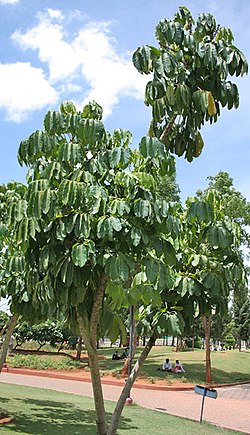| Heptapleurum actinophyllum | |
|---|---|
 | |
| In Hyderabad, India | |
| Scientific classification | |
| Kingdom: | Plantae |
| Clade: | Tracheophytes |
| Clade: | Angiosperms |
| Clade: | Eudicots |
| Clade: | Asterids |
| Order: | Apiales |
| Family: | Araliaceae |
| Genus: | Heptapleurum |
| Species: | H. actinophyllum |
| Binomial name | |
| Heptapleurum actinophyllum (Endl.) Lowry & G.M.Plunkett | |
| Synonyms [2] | |
| |
Heptapleurum actinophyllum (formerly Schefflera actinophylla) is a tree in the family Araliaceae. [2] [3] It is native to tropical rainforests and gallery forests in northern and northeastern Queensland coasts and the Northern Territory of Australia, as well as New Guinea and Java. Common names include Australian umbrella tree, Queensland umbrella tree, octopus tree and amate.








